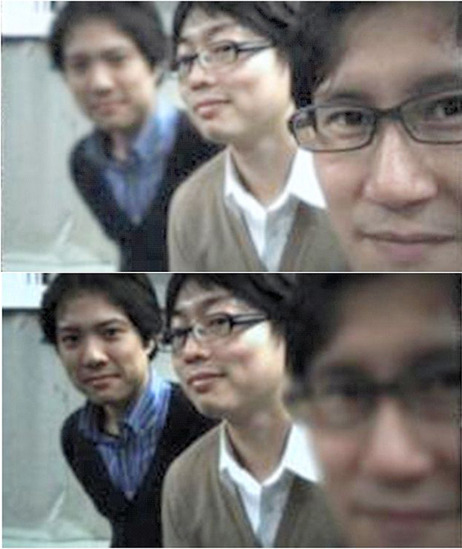Toshiba Reveals Lytro-Style Refocus Camera Module For 2013
Toshiba is readying a Lytro-style camera that could allow photos taken on smartphones and tablets to be refocused after they're captured, with a complex lens assembly creating data-dense adjustable images. The camera, which is expected to be commercialized in late 2013, grabs 500,000 pictures in one take, The Asahi Shimbum reports, thanks to an identical number of lenses in front of the sensor, each taking a shot with slightly different focus settings.
The resulting image can be refocused among each of those 500,000 focal settings, with the end result being a post-capture choice over what is crisp in the frame and what is blurred. Toshiba says the camera module can also be used for video capture, again with greater flexibility over what is kept in focus.
However, since the module is able to precisely gauge the distance between different objects within the frame, it's possible to do some chromakey-style editing. The camera can retain a foreground subject, for instance, and replace the background with an alternative scene, something which usually requires post-processing if the effect is to be particularly believable.
The lenses themselves are a mere 0.03mm in diameter, and are arranged in front of a sensor 5 x 7 mm in size; altogether, the camera module itself measures roughly 1cm square. That's considerably smaller than the "light field" technology Lytro developed for its eponymous camera, which is limited to stills not video, and while impressing early reviewers with its flexibility, was criticized for the generally underwhelming quality of its shots.
Toshiba is pushing the module among phone and tablet manufacturers; we'd also like to see it in life-logging systems like Google Glass and Kickstarter success Memoto, where being able to retroactively focus on different elements of the frame (and not bother with settings during filming) could be very useful. No word on how it compares in price to a typical module, nor indeed what resolution the final images are.

[via Engadget]
